Friday, November 30, 2018
“Boy Erased” and “The Miseducation of Cameron Post” – Two Films Expose Harm of “Conversion Therapy”
from The New Social Worker Online — the professional social work careers magazine https://ift.tt/2zBjG5S
Your view? Canada's proposed tax break on digital subscriptions
from World News Publishing Focus by WAN-IFRA - World Association of Newspapers and News Publishers https://ift.tt/2rfWaa6
Heavenly Vices: irresistible love token jewelry.
Heavenly Vices is for dreamers and storytellers and romantics, for those of us who look at single objects and see the beguiling allure of lost secrets and true but forgotten love.
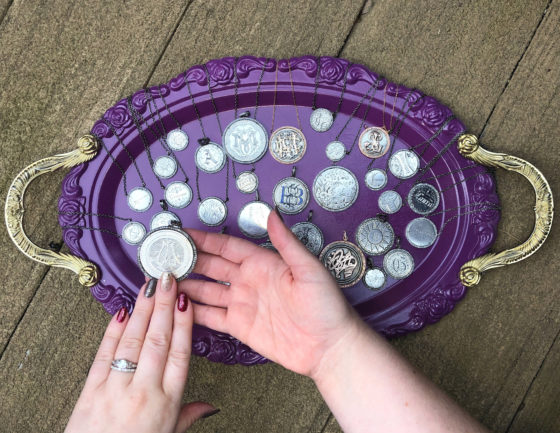 Each piece of Heavenly Vices jewelry starts with a love token.
Each piece of Heavenly Vices jewelry starts with a love token.
These remarkable artifacts were once coins – actual legal currency – that have been scraped clean on one side and engraved with a lover’s initials, a treasured name, a phrase of significance, or other meaningful symbol. The altered coin would then have been gifted to a lover, friend, child, or parent; a tangible representation of enduring feelings presented before long separations, to commemorate anniversaries and engagements, or for no particular reason at all.
New Orleans-born Samantha Jackson has spent years amassing a huge collection of these love tokens and now her jewelry line, Heavenly Vices, is giving these remarkable objects new life.
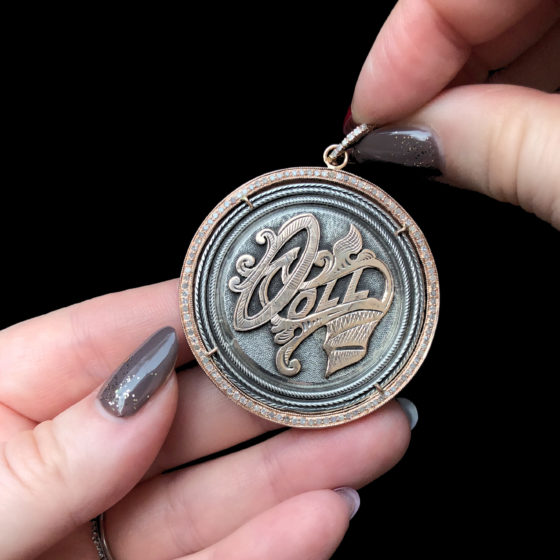 Each Heavenly Vices jewel is a palimpsest, a piece of currency turned secret message turned artifact turned adornment. The love tokens are set in precious metal and wreathed in diamonds.
Each Heavenly Vices jewel is a palimpsest, a piece of currency turned secret message turned artifact turned adornment. The love tokens are set in precious metal and wreathed in diamonds.
This one is particularly elaborate and bears the word “Doll” in rose gold. Was it an endearment? Someone’s name? We’ll never know, but it’s stunning to look at, especially in that rose gold setting.
This style of love token may date from as early as 1300’s England and peaked during the oh-so-sentimental Victorian era, when it was common to have love token stands set up shop at fairs: they’d customize your coins for you right on the spot. Each love is a tiny, tangible piece of someone’s story that history has left behind of us to find.
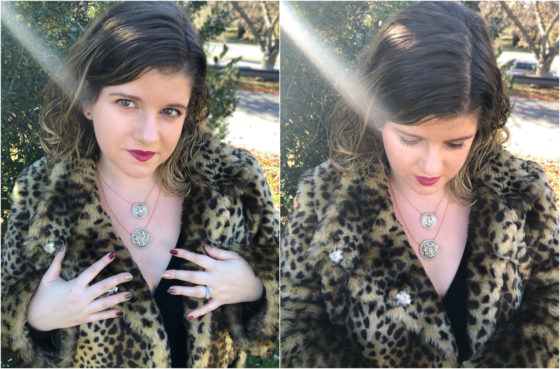 Many of the Heavenly Vices love tokens are very simple, but others are exquisitely elaborate. These two beauties fall into that second category: similar to the “Doll” above but even fancier, with swirling, elaborate monograms in multiple colors of gold with coordinating gold or rose gold settings and chains.
Many of the Heavenly Vices love tokens are very simple, but others are exquisitely elaborate. These two beauties fall into that second category: similar to the “Doll” above but even fancier, with swirling, elaborate monograms in multiple colors of gold with coordinating gold or rose gold settings and chains.
Some of the Heavenly Vices love token pieces feature stationary pendants on chains (like these two), others are charms that can go on anything for maximum versatility.
 One of my very favorite things about the Heavenly Vices designs is that the back of the pendant is left open. The vast majority of the love tokens still look like a coin on the reverse, although a few special pieces have double-sided engravings.
One of my very favorite things about the Heavenly Vices designs is that the back of the pendant is left open. The vast majority of the love tokens still look like a coin on the reverse, although a few special pieces have double-sided engravings.
Many of the coin sides bear the marks of time more than the engraved side; these two are a perfect example, with the ridges through the middle of the one on the left and the gentle, consistent wear of the one on the right.
This may seem like an unimportant aspect of the overall design of these jewels, but to me, the fact that Heavenly Vices shows such reverence for the history of the artifacts incorporated here makes all the difference to me.
 If you’re anything like me (and a lot of you are!) then you’re as fascinated by the history of the love tokens themselves as you are by the beauty of the finished Heavenly Vices pieces. It won’t surprise you to learn that Heavenly Vices designer Samantha Jackson is a kindred spirit as well; we had a long conversation about the evolution of her very specific designs and here’s a bit of what she shared with me:
If you’re anything like me (and a lot of you are!) then you’re as fascinated by the history of the love tokens themselves as you are by the beauty of the finished Heavenly Vices pieces. It won’t surprise you to learn that Heavenly Vices designer Samantha Jackson is a kindred spirit as well; we had a long conversation about the evolution of her very specific designs and here’s a bit of what she shared with me:
Everyone in my family is a big talker/ storyteller and I just loved how these coins had been part of someone’s story, whether or not we may ever know what it was as is the case with some of the odd tokens I have been posting this week, or even one which I recently acquired that is not the best one I have by far but I couldn’t resist its backstory.
During the demolition of a pottery store, an enormous safe was found, with most of the contents being junk. The shop owner was an avid coin collector and hoarded away some of the best pieces that came into the shop as payment (as his father had done). When the safe was discovered, a long time coin collector volunteered his time to verify the authenticity of the coins in the safe.
So in all kinds of ways these coins are connected to people in a deeply passionate way – whether as an expression of romantic or familial love, love for a restaurant as in the case of my fantastic menu coin, or just for love of coins.”
Doesn’t the idea of that huge safe filled with love tokens make you drool? I’d love to paw through Samantha’s secret collection of coins waiting to become Heavenly Vices designs!
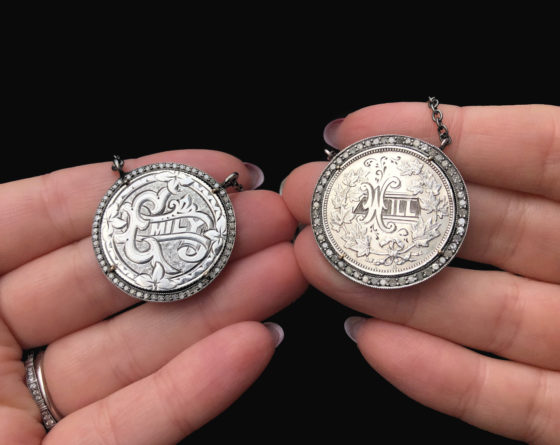
In the course of building her love token collection, Samantha Jackson of Heavenly Vices has come across a countless variety of names and initials, as well as some truly unusual coins: a couple of favorites are “Stop yer tickling, Jock” and “Pickles.”
Another rare love token in Samantha’s collection is the legendary French restaurant menu coin, which not even I have gotten to see firsthand. There are also sub-genres within the love token realm:
In my search for love tokens I have also found and purchased Trezains, or French Marriage Medals which are embedded with a lot of religious symbolism and Convict Tokens which English prisoners in the 18th century would engrave and leave behind with their loved ones before being shipped off to Australia or other British penal colonies.
One thing I recently discovered are Foundling Tokens, which are just heart breaking. They were engraved coins left behind in London’s Foundling Hospitals by mothers who had to abandon their children as a way they could identify their children if they were ever to be able to come back and collect them. I have never seen one on the market, and the only ones I have ever seen are in the Foundling Museum where they belong.”
These unusual ones are unicorn-level rare; I recommend DMing Samantha the second they show up on the Heavenly Vices Instagram, because you know there’s never going to be another “Pickles.”
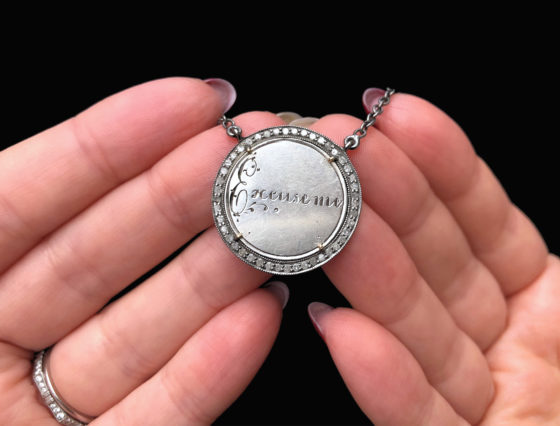 Here’s the infamous “Excuse me,” which I did get to play with! It’s very simple in design, but it’s so unusual that it immediately became my favorite of the batch I photographed.
Here’s the infamous “Excuse me,” which I did get to play with! It’s very simple in design, but it’s so unusual that it immediately became my favorite of the batch I photographed.
Who had this made and WHY?? What did it mean? Was it an inside joke? A pickup line? I couldn’t possibly love it any more than I do. Rock on, whoever you were that commissioned or created this. You did you.
I haven’t bought “Excuse me” from Samantha yet, but I may change my mind about that before I make this blog post public. WE WILL SEE. #hazardsofthejob
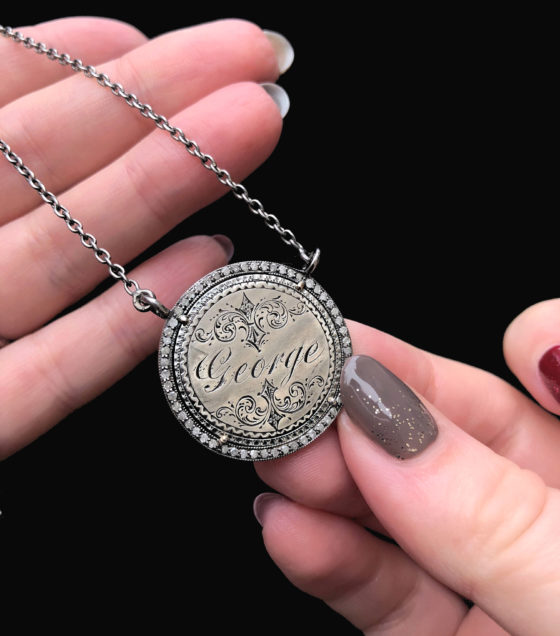 The majority of the coins have names or initials. There’s an enormous variation in style, which is truly what makes Heavenly Vices so incredibly cool: it’s not like you’re going to a department store and choosing which of three similar factory-made designs you want, instead, you’re waiting for the perfect treasure from the past that speaks to your soul.
The majority of the coins have names or initials. There’s an enormous variation in style, which is truly what makes Heavenly Vices so incredibly cool: it’s not like you’re going to a department store and choosing which of three similar factory-made designs you want, instead, you’re waiting for the perfect treasure from the past that speaks to your soul.
Heavenly Vices designer Samantha Jackson’s other passion is animal rescue, and I was touched by what she said about the connection between her two vocations:
One of my fosters is in the process of getting an article in a local magazine published and in our discussions she said something like just like you fostered homeless cats, you are fostering these coins and readying them for their new lives with new families. And I just loved that!
I consider it an honor and a privilege (and frankly a bit of a miracle) that I have been able to find all of these and hopefully will be able to steward them back to life where they can become a symbol of passion for new people/ families/ weirdos (heehee)/ collectors.”
Heavenly Vices is actually honoring their commitment to animal rescue by donating 10% of profits through the end of the year to organizations helping animals displaced by the California wildfires.
 What do you think, my darlings?
What do you think, my darlings?
Are you as enthralled by Heavenly Vices as I am? Will you be holding out for your own name, or are you looking for the name or initials of someone dear to you? Should I buy “Excuse me”? Who’s going to get Jock? Let’s discuss.
I have approximately a million more pictures of Heavenly Vices love tokens (I got really into photographing them) so keep an eye on my IG for more names and also videos of some of the ones you’ve seen here!
 The information on love token history in this post was sourced from Heavenly Vices, Collectors Weekly, and The Love Token Society.
The information on love token history in this post was sourced from Heavenly Vices, Collectors Weekly, and The Love Token Society.
This sponsored post is brought to you by Heavenly Vices.
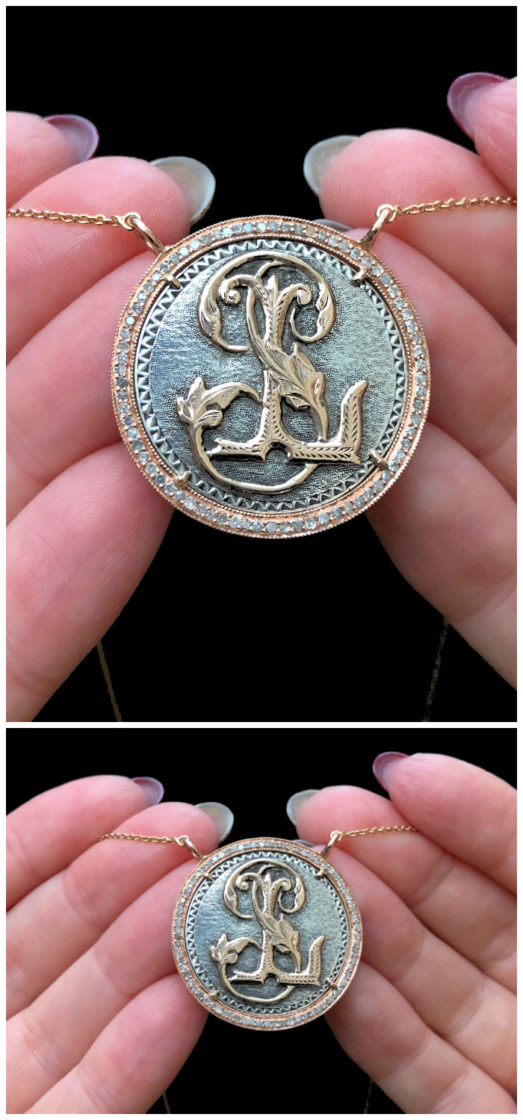
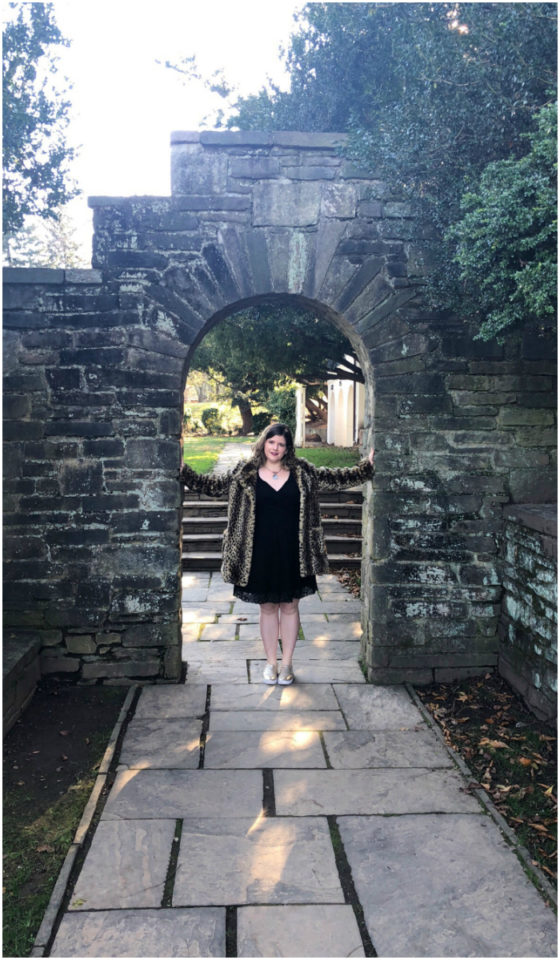




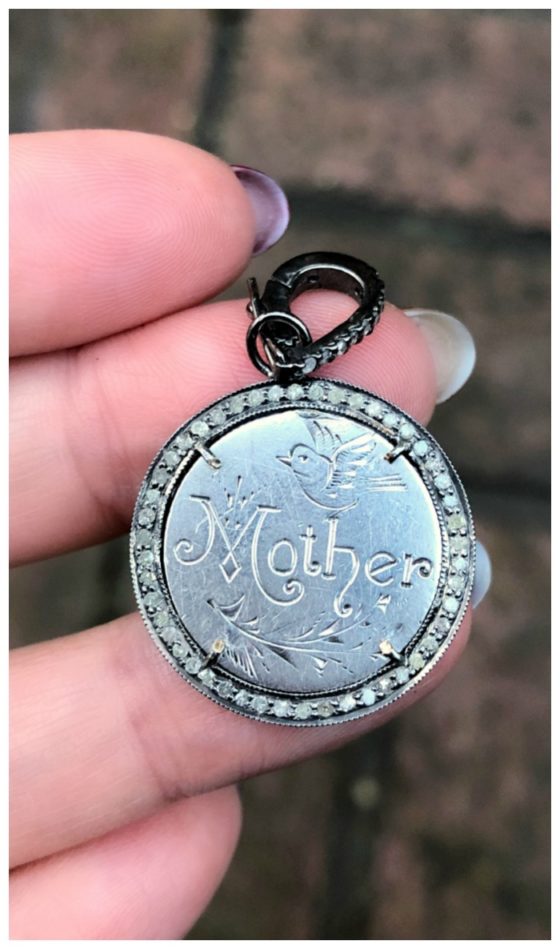
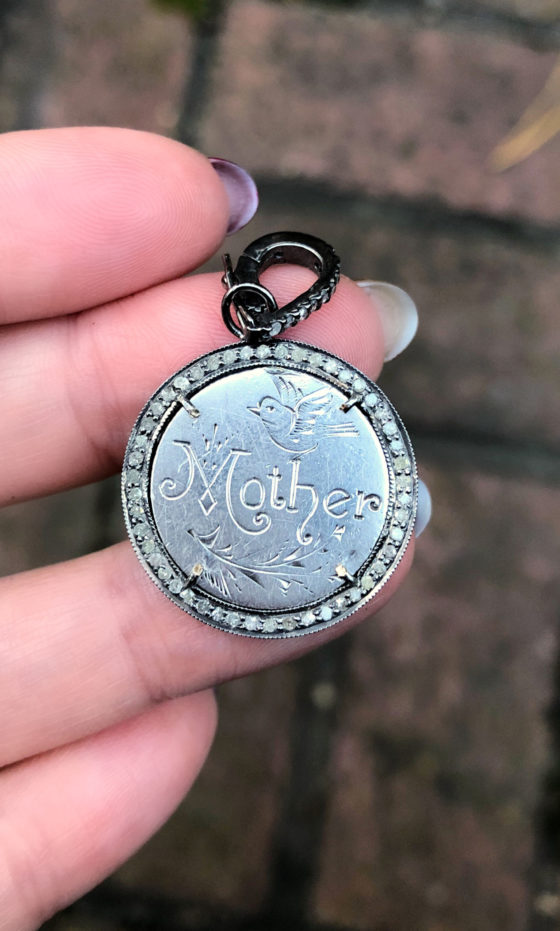
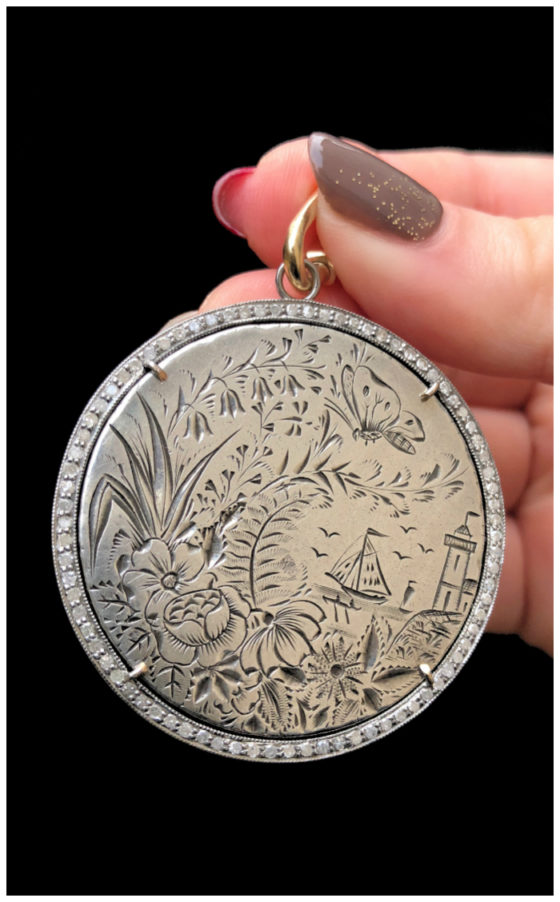
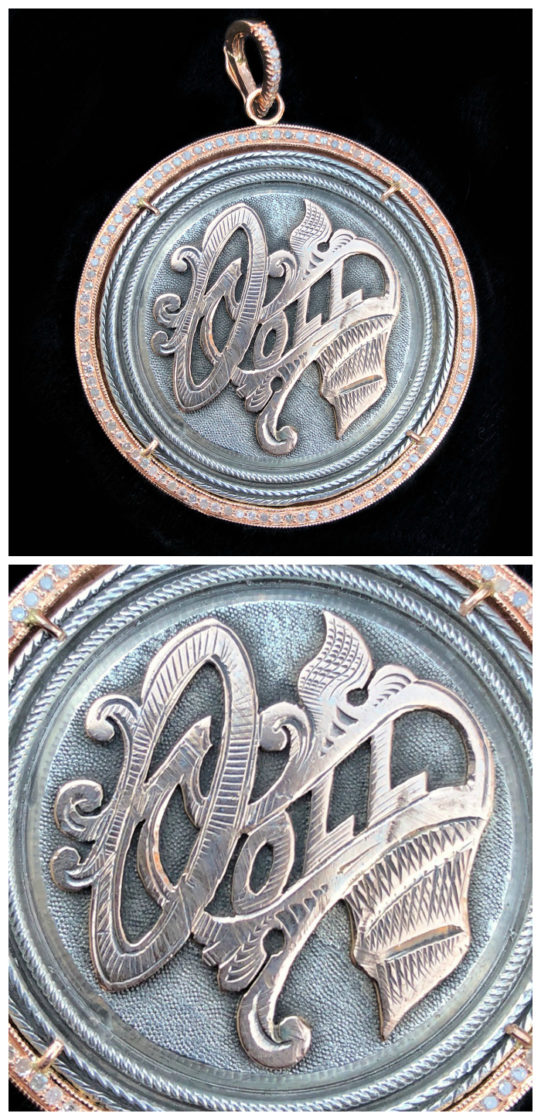

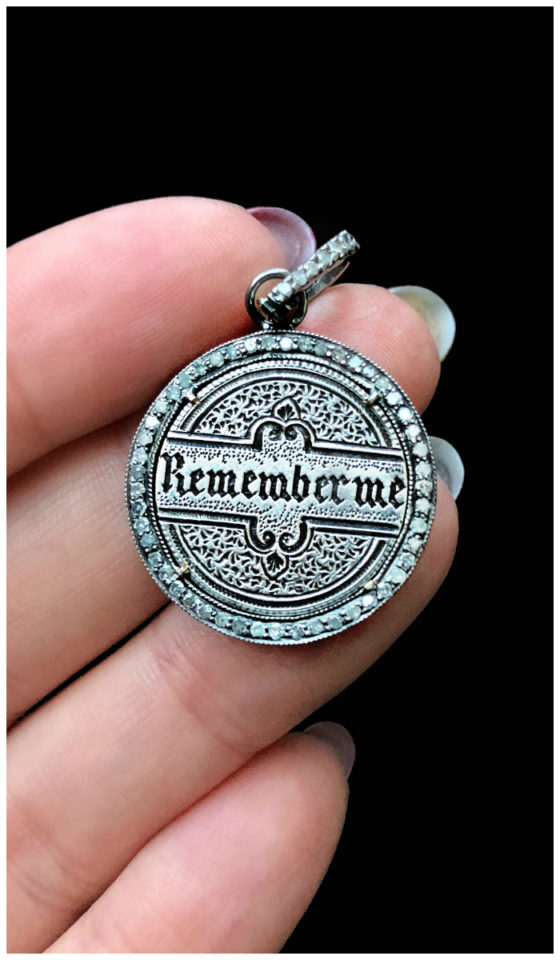
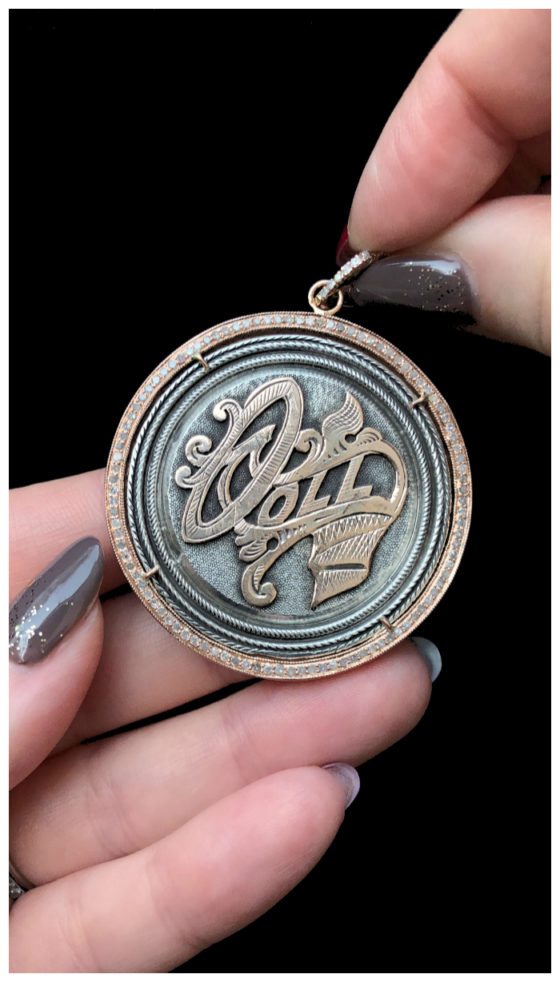
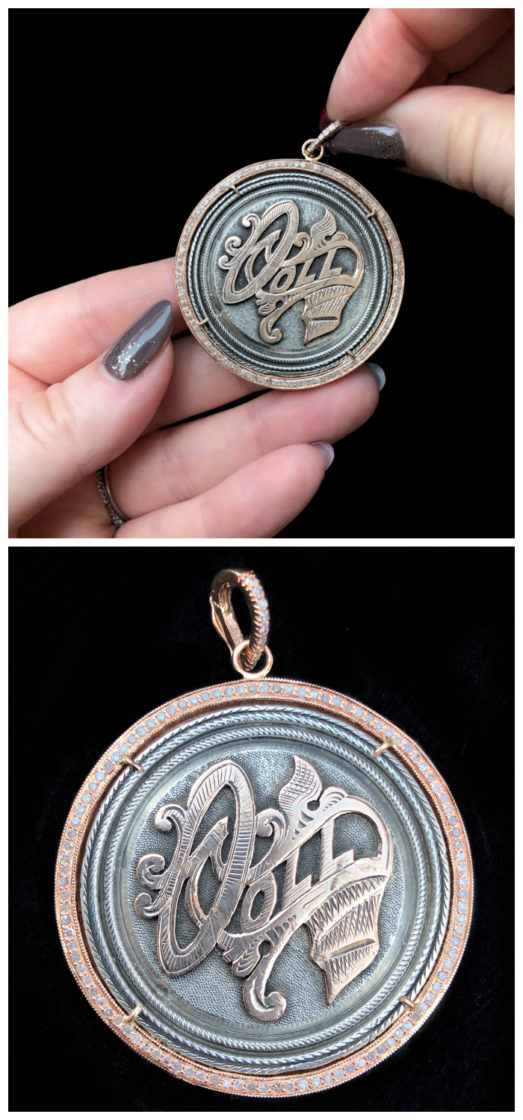
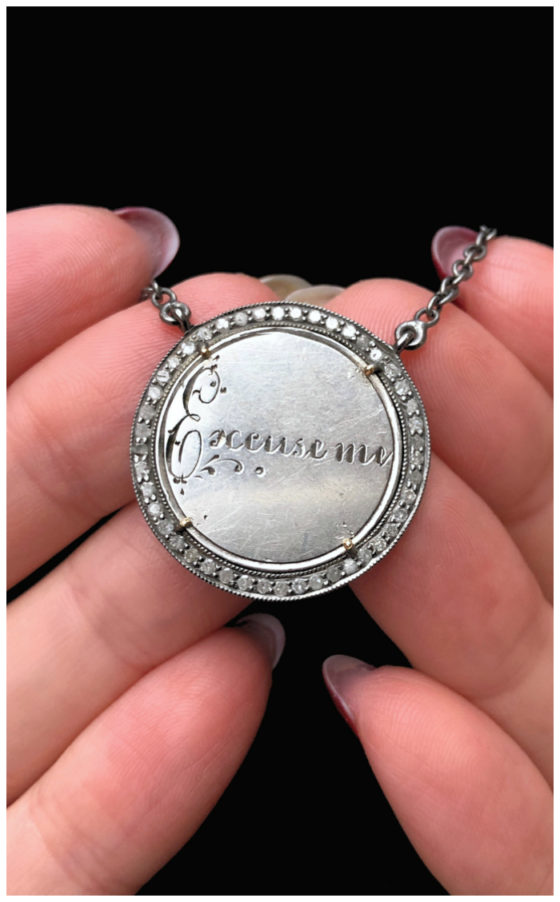
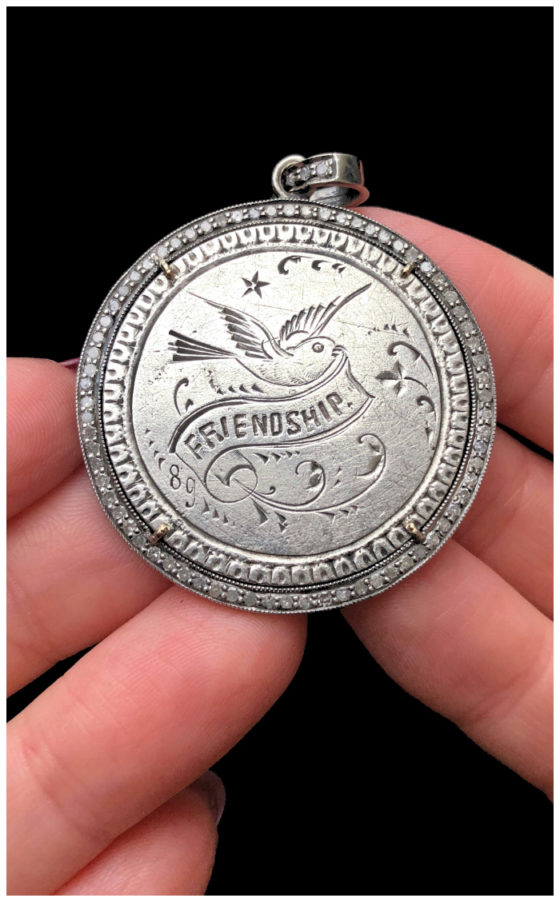
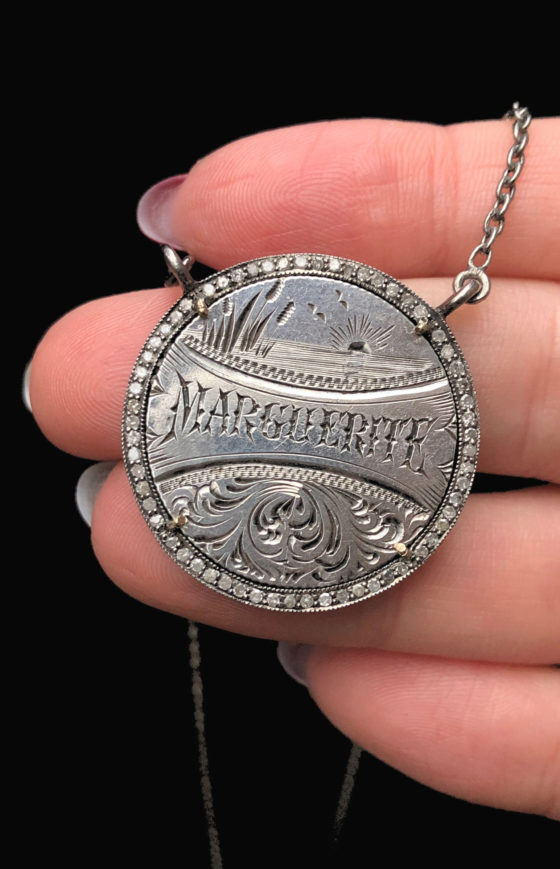
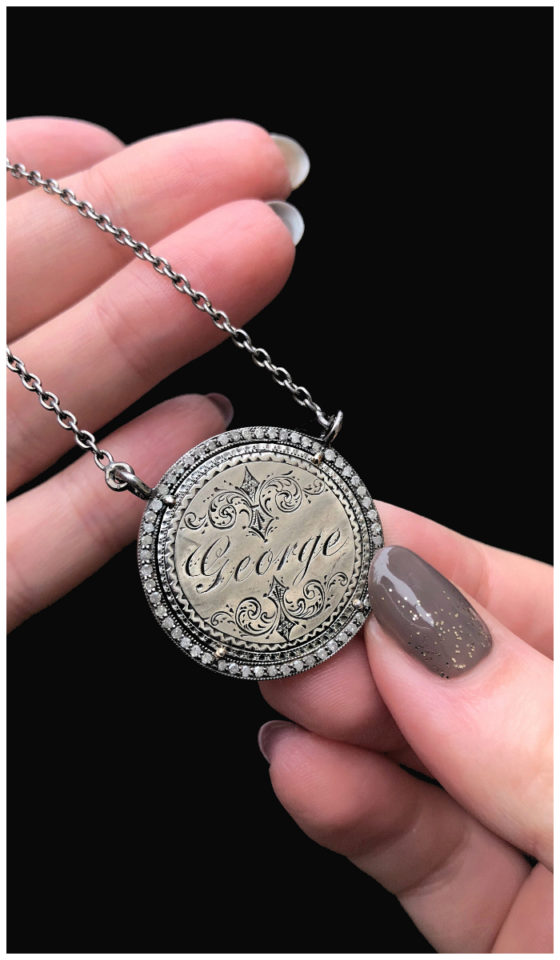


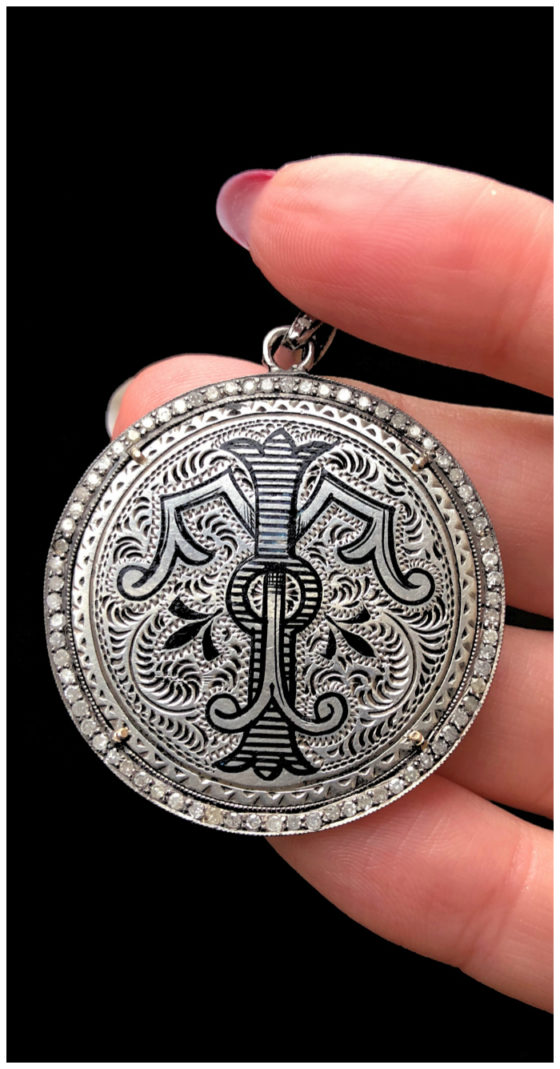


The post Heavenly Vices: irresistible love token jewelry. appeared first on Diamonds in the Library.
from Diamonds in the Library https://ift.tt/2TYtyiC
Study: Is it time to stop chasing ‘shiny things’ and move towards sustainable innovation?
from World News Publishing Focus by WAN-IFRA - World Association of Newspapers and News Publishers https://ift.tt/2Qu4AZD
Thursday, November 29, 2018
The best of African digital honoured at DMAfrica 2018
from World News Publishing Focus by WAN-IFRA - World Association of Newspapers and News Publishers https://ift.tt/2E3sPrS
Divers Spearhead Koh Tao Marine Conservation Efforts
Koh Tao is one of the busiest dive destinations in the world. Consequently, its popularity has taken a toll on the marine environment. Fittingly, the dive community that benefits from this busy industry has stepped up efforts to help with Koh Tao marine conservation.
Koh Tao is in the Gulf of Thailand, close to (even busier) Koh Samui. The island is both convenient to both European and Australasian tourists and one of the most affordable places for scuba certification. Thus, many divers choose to advance their training here.
Koh Tao’s pretty coral reefs, abundant marine life, and frequent whale-shark sightings draw divers. Land-based tourists come here for the beautiful, white sandy beaches. In fact, tourism is one of the main drivers of the island’s economy, so Koh Tao’s marine conservation efforts are critically important.
How dive operators are helping
While the Thai government does its bit to promote ecotourism, the dive operators themselves are doing the serious work on a grassroots.
Local tour operators have joined forces and collectively created a mantra of “5 R’s” — Reducing, Reusing, Repairing, Recycling and Rejecting:
- Reduce consumption of fresh raw materials, non-recyclable packaging or any waste producing material
- Reuse or repurpose items that can be used again like glass bottles, boxes or paper
- Repair and reuse an item instead of buying a new one
- Recycle all materials that can be transformed into a new product
- Reject or stop using any item or material that pollutes or harms the environment
Organizations making a difference
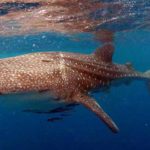
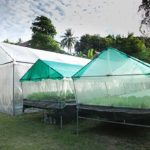

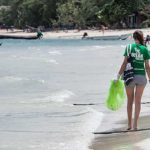
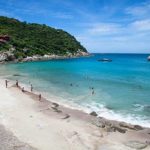
Other informal groups include the Save Koh Tao Club, whose efforts date back to 2000. This organization advocates eco-friendly products and best practices like refillable bathroom amenities, energy-saving lightbulbs, line-drying laundry, and using recycled wood in to build and maintain resort villas. The club also captures and uses rainwater with a filtration system to provide drinking water from the tap. This reduces the number of plastic bottles brought to and in use on Koh Tao.
Community-based initiative Trash Hero strives to remove current waste as well as reduce future waste by inspiring long-term behavior change. Trash Hero sets an important example when visitors see its team cleaning up Sairee Beach twice a week.
Community-based conservation initiative Get Involved Koh Tao helps preserve Koh Tao’s natural resources and environment. This group of dive centers has joined forces to organize a monthly clean-up to remove waste and to encourage locals and tourists to say no to plastic straws, cups and bags.
Ban’s Conservation Learning Center Koh Tao is dedicated to preserving the island’s natural resources. It operates a waste-separation plant for recycling paper, aluminum cans, bottles and plastic. The organization also manages a dedicated composting area that ferments fat residue into fertilizer by mixing in grass and organic waste.
The Center has a wastewater-treatment plant that processes gray water, making it ready to use for plants and vegetable gardens. Regular workshops demonstrate simple crafts to help people learn how to reuse waste. These include how to make candles and liquid soap from recyclables.
Leaving a legacy
Divers are often eco-conscious. But the sheer volume of tourists means that plastic pollution inevitably ends up in the Gulf of Thailand. Whether it is irresponsible fishermen, passing tourists, or ocean-born litter settling on the seabed, the local community chooses not to ignore or accept it. These ongoing community-based initiatives are helping to ensure that the island’s marine environment can welcome divers for generations to come.
The post Divers Spearhead Koh Tao Marine Conservation Efforts appeared first on Scuba Diver Life.
from Scuba Diver Life https://ift.tt/2TY0Qia
Wednesday, November 28, 2018
The Medusa jewels I didn’t know I needed.
Medusa is a mythical figure that I haven’t typically paid much attention to…but somehow, recently, she’s worked her way into my consciousness. When I was at The Met in NYC recently, I actually found myself seeking her out: each time I spotted carved or painted snake hair, I felt like I’d spied a friend.
Not to get up on my feminist rage soapbox, but I think it’s the very nature of Medusa that is drawing me in. The idea of a mythical being whose defining characteristics are the opposite of the beauty that’s usually required for feminine power is exactly the hero that women need right now.
 This new collection from Sofia Zakia is why Medusa’s been on my mind. I’ve been seeing sneak peeks of the Medusa designs on the Sofia Zakia Instagram story for a while and now that the whole collection is out, they’re even more perfect than I’d hoped.
This new collection from Sofia Zakia is why Medusa’s been on my mind. I’ve been seeing sneak peeks of the Medusa designs on the Sofia Zakia Instagram story for a while and now that the whole collection is out, they’re even more perfect than I’d hoped.
Sofia Zakia, as you may remember, is the designer who created those creepy and glorious Halloween pieces I went crazy for last year. She’s got a gift for the delicate and figural.
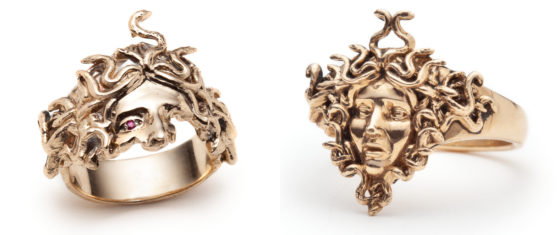 Isn’t she gorgeous?
Isn’t she gorgeous?
And by “gorgeous” I mean bold, strong, and striking: Sofia Zakia has done a fantastic job rendering this legendary figure without making her feel excessively Disnified. (She’s a beautiful piece of jewelry but she still looks like a powerful mythical monster, not a pretty pretty princess.)
 I don’t know how Sofia Zakia got the idea for these decayed-looking, Medusa relic designs, but they really float my boat. They feel so ancient and eerie in a powerful way. These are some serious talismans.
I don’t know how Sofia Zakia got the idea for these decayed-looking, Medusa relic designs, but they really float my boat. They feel so ancient and eerie in a powerful way. These are some serious talismans.
Talk to me, friends. Is anyone else feeling the allure of Medusa recently, or is this just a weird misandrist reaction I’m having to current events? What do you think of the Sofia Zakia Medusa pieces?
Images c/o Sofia Zakia.
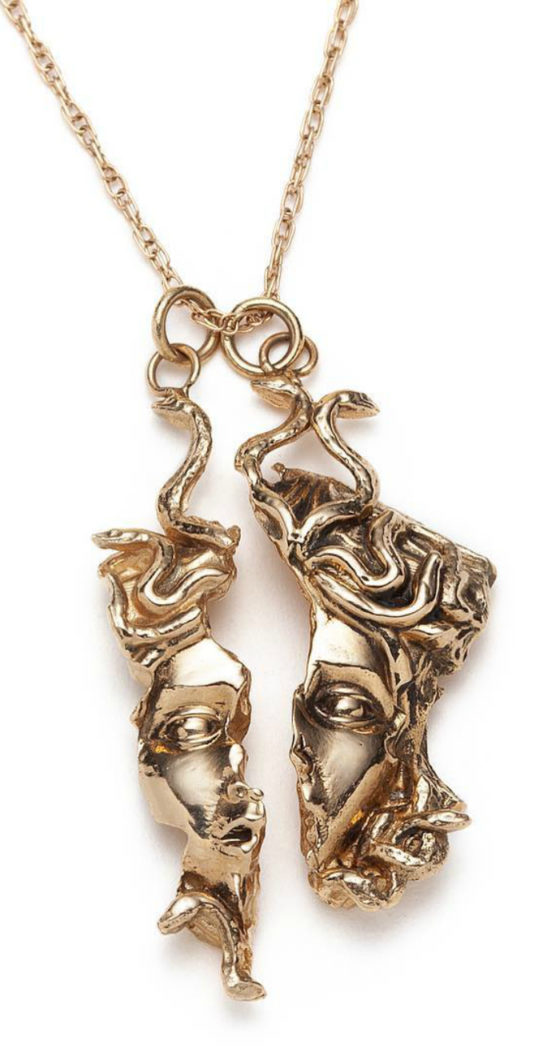
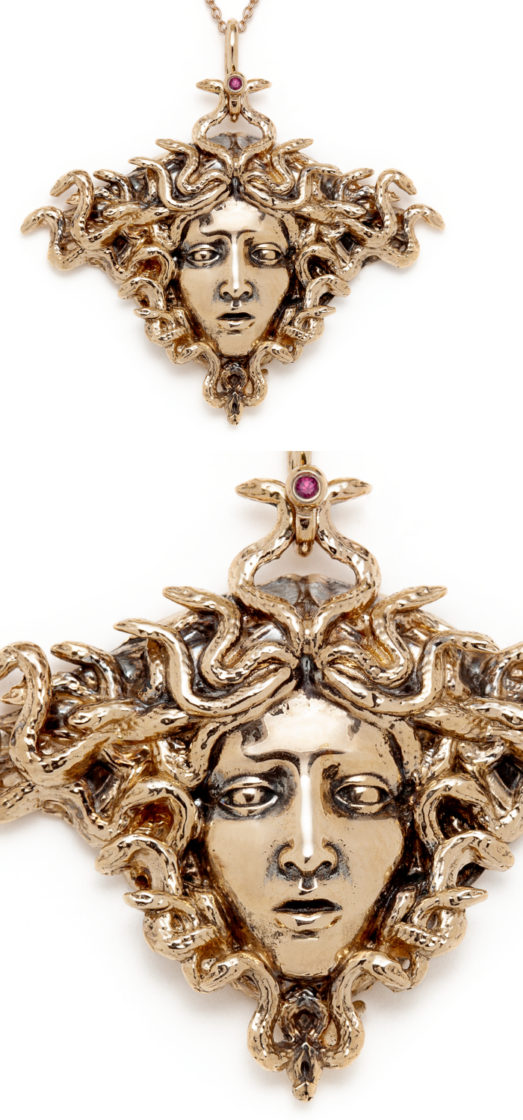


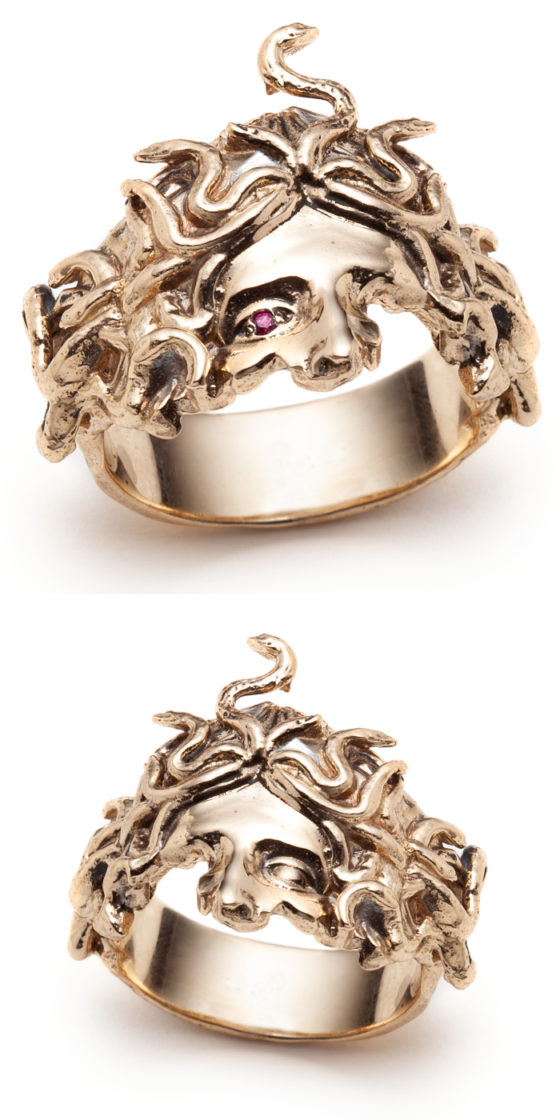
The post The Medusa jewels I didn’t know I needed. appeared first on Diamonds in the Library.
from Diamonds in the Library https://ift.tt/2P9Hd33
Tuesday, November 27, 2018
Four Great December Dive Destinations
December is an ideal month to go diving somewhere exotic and leave winter far behind. There’s unique marine life on offer around the world, plus big pelagic diving and plenty of sunshine. Here are our picks for four great December dive destinations.
Belize
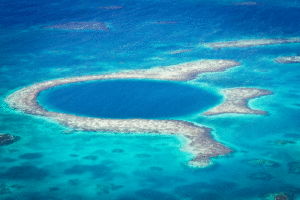
The Great Blue Hole in Belize
What makes it special? Scuba diving in Belize includes the iconic Blue Hole and Mesoamerican Barrier Reef, the largest barrier reef in the Northern Hemisphere. Belize has worked hard to protect its reef, and their stewardship shows. It’s home to numerous species, including manatees, green turtles, hawksbill and loggerhead turtles, plus countless pelagic fish.
Why visit in December? Visit in December and you’re likely to see thousands of groupers, including the endangered Nassau groupers as they gather in Belize for their spawning season. This unique gathering offers great photographic and behavioral opportunities for divers to enjoy.
Details: There are plenty of dives for all experience levels, though Belize is best for those with experience drift diving, wall diving and with good buoyancy control, all of which help prevent damage to the delicate corals. There are several liveaboard safaris along the Mesoamerican Reef, most including a visit to the Blue Hole.
When to go: Diving is possible all year. Water temperatures range from 79 to 86 F (26 to 30 C). Keep your eyes peeled for whale sharks if you visit the southern barrier reef from April to June and take your camera for the spawning groupers if you visit in December.
Cayman Islands
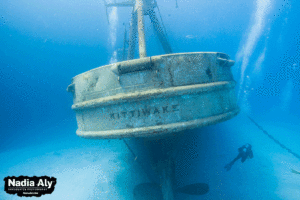
The Kittiwake in Grand Cayman
What makes it special? The Cayman Islands are famous for crystal-clear waters and over 350 dive sites. One of the world’s best-known wrecks, the Kittiwake also lies just off Grand Cayman. This 252-foot-long (77 m) U.S. Navy submarine rescue vessel lies at less than 65 feet (20 m) depth and offers multi-level wreck diving in exceptionally clear water. You can explore the huge interior and five decks or dive the exterior as large schools of fish and stingrays pass by. Don’t miss Bloody Bay Wall on Little Cayman for dramatic wall diving with plentiful corals and sponges. North Wall on Grand Cayman offers sheer drops and the chance to see nurse sharks and eagle rays. A visit to the Cayman Islands isn’t complete without also visiting Stingray City and swimming with numerous friendly stingrays.
Why visit in December? The Cayman Islands are an ideal destination for escaping the winter blues to enjoy some relaxation, world-class diving and sunshine. The average water and air temperatures in December are around 81 F (27 C) and the rainfall is low from December onwards.
Details: There are dives suitable for all experience levels in the Cayman Islands and liveaboard operators don’t usually require a minimum number of logged dives. It is also a great destination for those who suffer from motion sickness, as there are always calm waters on one side of an island or another. There are Cayman liveaboard safaris all year.
When to go: Diving is good year-round in the Cayman Islands, though June to October is the hurricane season in the Caribbean. The water temperature is always warm, from 78 to 82 F (26 to 28 C).
The Maldives
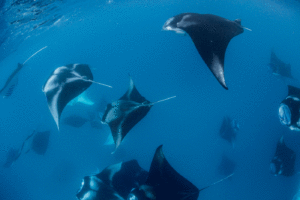
Hanifaru Bay in the Maldives is famous for mantas
What makes it special? The Maldives is on the wish list for many divers and rightly so. This iconic scuba-diving destination offers picture-perfect atolls, whale sharks, hammerheads and luxurious liveaboard diving. Ari Atoll offers the chance to experience current-swept channels and dive with big marine life. The area is most reliable for whale sharks and manta-ray encounters. Felidhu (Vaavu) Atoll offers night diving with huge numbers of nurse sharks, and Hanifaru Bay in Baa Atoll is the place to go for manta-ray feeding frenzies.
Why visit in December? The Maldives are at their best from December onwards, with flat seas, sunshine-filled days and warm waters averaging 82 F (28 C). It is a great time of year to visit to escape the winter blues and relax into the Maldivian way of life.
Details: Some atolls, such as Ari Atoll, can have strong currents and numerous drift dives. It is best to be an experienced diver to make the most of that atoll but there are plenty of dive sites for less-experienced divers. No longer just a luxury destination, the Maldives has dive options for all budgets and a variety of Maldives liveaboards to choose from.
When to go: The best time to dive Ari Atoll is from December onwards, with February to April featuring the highest chance of manta and whale-shark encounters. That being said, there are many different Maldives atolls to choose from and you can see whale sharks and manta rays somewhere in the Maldives all year.
Panama
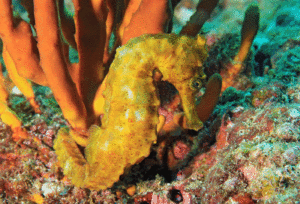
Coiba Island features plentiful macro life
What makes it special? Panama has a well-kept diving secret: Coiba National Marine Park. This rainforest-covered island off Panama has species found nowhere else on earth and plentiful big marine life. There are around 33 species of sharks here, including scalloped and great hammerheads, whale sharks, Galapagos sharks, bull sharks and tiger sharks. Only accessible via liveaboard, this is a great place to dive with sharks, plus manta and mobula rays, whales and dolphins.
Why visit in December? The dry season starts in December on Coiba Island. Whale sharks are common visitors to the area from December to April.
Details: Coiba Island dive sites are subject to strong currents and deep waters, so are best suited to experienced divers. The water temperature varies between around 73 to 82 F (23 to 28 C). However, noticeable thermoclines can take the temperature down to around 61 F (16 C) at depth. It is best to take exposure suits to accommodate a wide range of temperatures.
When to go: Dive conditions can be excellent all year. So, when you visit depends on what you want to see. While December to April is good for whale sharks, July to October sees lots of humpback whales.
Divers and writers at LiveAboard.com contributed this article.
The post Four Great December Dive Destinations appeared first on Scuba Diver Life.
from Scuba Diver Life https://ift.tt/2KCkH27
Building bridges between newsbrands and the people
from World News Publishing Focus by WAN-IFRA - World Association of Newspapers and News Publishers https://ift.tt/2E17kbf
Sunday, November 25, 2018
Bling It On with a Pre-Made Holiday Promotion

Did the holidays arrive before you had a chance to put together a promotion? BeautyMark Marketing offers stylish, professionally crafted, agency-quality marketing at a small-business price. Seasons and holidays are at the heart of a successful salon marketing calendar. When done right, coordinated salon promotions can generate a steady flow of guests.
Email, Social Media and Banner $350
Click HERE to view our collection of Pre-Made Promotions >>
Get agency-quality marketing at a small business price. We offer stylish, professionally crafted promotions pre-designed by the beauty experts at BeautyMark Marketing. Reap the rewards of our beauty expertise and professionally crafted marketing plan with monthly promotions.
holiday marketing, holiday marketing for salons, holiday salon marketing, holiday merchandising, holiday gift card sales, salon business, salon client selfies strategy, salon digital marketing agency, salon holiday marketing, salon promotion for holidays, salon promotions for december, salon promotions for holiday, social media marketing holiday marketing, holiday theme, holiday marketing ideas, salon holiday marketing, salon holiday campaigns
from Beauty Business Blog https://ift.tt/2TFVQym
Dive Profile: PT Hirschfield
Australian diver, oceanographer and award-winning underwater photographer PT Hirschfield has incurable recurrent endometrial cancer. But it hasn’t stopped her from pursuing her passion underwater. She was a recent guest on the Blunt Report podcast where we discussed her cancer, as well as what keeps her enamored with the underwater world.
“I actually vomited for my first 60 dives,” Hirschfield said when explaining how she had little attraction to diving in the first place. Her first dive simply came about as a romantic idea for a couple to do on the Great Barrier Reef. Ironically, her future passion became a solo pursuit when her husband became incapacitated with seasickness.
Almost 1,000 dives later, this genesis moment must seem like a lifetime ago. Her diving career now encompasses thousands of photographs and videos, with her work featured by the likes of BBC’s “Blue Planet”, National Geographic and the Dodo. She also won the award for the Australasian Underwater Photographer of the Year in 2018.
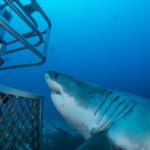
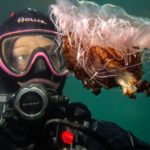
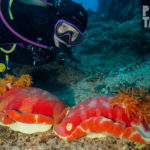
Struggling with health issues
While these accolades alone put her into a category that includes some of the world’s most prestigious oceanographers, Hirschfield has faced devastating health issues that make her relationship with the ocean even more meaningful. In 2014, after several reoccurring diagnoses and lengthy treatments, medical staff declared that she had an inoperable, grapefruit-sized tumor and that any further treatment would only buy her time. Yet, through the many surgeries, Hirschfield used her love for the ocean to keep her spirits high. The light at the end of the tunnel, for her, was getting back underwater.
Making the most of her time
Though many would crumble in the face of this diagnosis, Hirschfield took the opposite track. “You do start to process the whole issue of mortality at a very intimate level,” she said, adding that the fact she will eventually pass away makes her no different to anyone else, except that she doesn’t have the luxury of denial. Not only does Hirschfield draw on the ocean as a source of power and motivation, she also reflects on the constant struggles between life and death that a diver witnesses on a day-to-day basis. From the very top of the predatory apex to the deepest of the bottom dwellers, the ocean is a testament to the fact that death is just as much a part of life as life itself. She has found peace in the raw and untamed power of the natural world, accepting it for all that it is; both beautiful and fierce.
Now, through numerous conservation projects, photography and with the use of her voice, Hirschfield has dedicated her existence to giving back to the ocean that has given her so much. As she says on her blog: “As far as I know, everyone is going to die sometime (I just don’t have the luxury of denial). So, we may as well all make the most out of the days we have rather than lament the ones we don’t, right?”
By guest author Konner Blunt
The post Dive Profile: PT Hirschfield appeared first on Scuba Diver Life.
from Scuba Diver Life https://ift.tt/2PWKDeN
Friday, November 23, 2018
Technical-Diving Equipment Configurations
You can typically spot technical divers at a dive site or on a boat because they will be the ones with more equipment than anyone else. Further, technical-diving equipment configurations differ substantially from recreational diving. Here we’ll look at the differences between twinsets/doubles and sidemount diving.
Twinset diving
Twinsets or doubles have been classically associated with technical diving and most technical divers have trained using them. Many instructors and training agencies use what is called a ‘Hogarthian set up.’ Named after cave diver William Hogarth, it emulates the DIR — Doing It Right — philosophy of technical diving. That means it’s minimalist while also ensuring that divers have backed up every piece of life-saving equipment.
As you’d expect for a twinset configuration, there are two tanks, often the same size as recreational divers’ tanks. The tank valves are connected via a manifold, a type of bridge valve that allows divers to access gas from both tanks through either side’s regulator. Each valve has a first stage attached. On the right, this first stage connects to a 7-foot (2.1 m) hose with a second stage and an LPI inflator for the wing. On the left, the first stage connects to a second stage on a standard-length regulator hose. The diver uses an attached necklace to place the regulator around his neck. There’s also an SPG hose and any inflator hoses for drysuits.
Why is one of the hoses over 6 feet (2 m)? This goes back to overhead-environment diving, where divers may have to exit behind each other in an out-of-gas situation. The diver with gas would donate the long hose to the victim, using the back-up regulator on the necklace for themselves. In this way, they can exit single file by swimming behind each other.
A wing and harness with backplate holds everything together. Wings come in different shapes and sizes, but most importantly they must provide enough lift for the amount and type of tanks the diver is using. Divers can choose between having a single bladder in their wing or a second one to use in case the first one fails. Classic harnesses are made of a single piece of weight-belt webbing plus a crotch strap. They are fitted with D-rings to provide attachment points for regulators and other gear.
The goal is to achieve stability, allowing the diver to control the twinset and potential stage tanks underwater, effectively turning the twinset into a platform from which the diver is suspended.
Sidemount diving
Sidemount, on the other hand, is more about flexibility, allowing divers to attach and remove tanks underwater when necessary. This configuration has become hugely popular within technical diving — some even call it a fad. We can trace the origins back to U.K. sump diving, where divers maneuvered through restrictions too small for twinsets, sometimes even small enough that they had to remove their tanks and push them through the restriction ahead of their body. Sidemount is still closely associated with cave diving, although depending on the size of the cave, twinsets may be just as suitable.
For sidemount configuration, divers mount tanks at their side rather than on their back, starting at the armpit and ending below the hips. Tanks connect to the harness with a cam band or jubilee clip attached to the lower part of the tank and equipped with a bolt snap. Tank valves remain in place on the diver’s body with bungee cord, typical for aluminum tanks, or a combination of bungee and clips, more typical for steel tanks.
Twinset and sidemount differences
One of the main differences between sidemount and twinset diving is the degree of standardization. Twinset configurations are highly standardized whereas sidemount configurations are not necessarily. This has to do with sidemount history as a means to an end initially, which gradually developed into a full-fledged diving configuration. Divers in sidemount courses will learn a variety of setups but will have to spend time to perfect their own.
As a consequence of sidemount flexibility, different divers might also set up regulators differently. Most sidemount divers prefer regulators with swiveling first stages to allow flexible hose movement. They usually prefer a fifth low-pressure port as well, allowing them to mount hoses at a 90-degree angle. Sidemount divers can also configure regulators by largely following the twinset configuration described above. This means having a first stage, long hose and second stage with an SPG on the right side and a first stage, short hose, second stage with necklace, inflator hose and SPG on the left side.
Harnesses, hoses and bladders
Many sidemount harnesses invert the corrugated inflator hose, meaning it runs from under the diver’s left arm across their upper body rather than over the left shoulder. This is to keep as low a profile as possible in order to navigate restrictions. This is where the fifth low-pressure port comes in handy, allowing divers to install a short inflator hose across the body rather than over the shoulder.
Speaking of hoses, sidemount SPGs are usually mounted on 6-inch (15 cm) high-pressure hoses, as longer hoses are not practical and can become an entanglement hazard. Inflator hose lengths vary according to diver size and configuration.
Sidemount harnesses and bladders come in many shapes and sizes. Most are adjustable to fit different-sized divers, but some come in size ranges. Which one works best will depend on your size and the type of sidemount diving planned. Just like with twinset wings, it’s important to pick one with sufficient lift for the tanks. For example, those who want to do recreational sidemount dives with no more than two tanks will find that a small, super-streamlined harness will be enough. Technical dives with more tanks will require more lift capacity.
Most tech divers start their journey in either of these open-circuit configurations. Rebreathers add another option — take a look at this post for the basics. Paramount for safely diving in either configuration is instruction by a qualified teacher. Sidemount especially may not look that different from other configurations, but the devil truly is in the details. If you get it wrong, comfort, streamlining and trim — some of the main reasons to dive sidemount — are all compromised. Technical-diving configurations may seem intimidating, but with the proper knowledge, they open up a whole new world underwater.
The post Technical-Diving Equipment Configurations appeared first on Scuba Diver Life.
from Scuba Diver Life https://ift.tt/2QeBYDr
Wednesday, November 21, 2018
Marine Species: Flamboyant Cuttlefish
One of the smallest yet most colorful of its species, the flamboyant cuttlefish lives up to its name.
Getting to know flamboyant cuttlefish
Native to the Indo-Pacific region, the flamboyant cuttlefish is quite small when we compare it to other cuttlefish, growing up to only 3 inches (8 cm). This is the only species of cuttlefish that’s known to crawl on the seafloor instead of swimming gracefully like others. It also has a very robust aspect, unlike some other species.
Flamboyant cuttlefish enjoy muddy and sandy sea floors and divers can see them both during the day and at night. They hunt for crabs, shrimp and small fish using tentacles with suckers to capture their prey.
Vibrant color patterns
As their name suggests, heir most distinctive feature is their color pattern. When attacked or disturbed or when they are stalking a prey the flamboyant cuttlefish changes from its normal dark brown color to show patterns of white, brown, red and yellow that can be truly mesmerizing. They can also change the shape of their body and texture of their skin as part of their camouflage skills. The animals begin using these techniques as soon as the eggs hatch, so even juveniles can use this ability. They also use the changes in color to mate or to threaten other cuttlefish if they feel intimidated.
They are also the only species of cuttlefish that is toxic to humans, as their meat contains toxin.
Once the male fertilizes the eggs, the female deposits them in crevasses, under rocks or in coral so they are protected from predators. Once the eggs develop, they become translucent, making it possible to see the tiny cuttlefish inside. When they hatch, the juveniles are independent immediately.
Seeing flamboyant cuttlefish
These cuttlefish are active both during the day and at night. Their small size can make them difficult to spot but they are quite slow-moving so once you have found one, there’s plenty of time to observe its behavior or snap a few pictures. Divers can spot flamboyant cuttlefish around the Indo-Pacific, particularly in Indonesia and the Philippines.
The post Marine Species: Flamboyant Cuttlefish appeared first on Scuba Diver Life.
from Scuba Diver Life https://ift.tt/2QaytxT
Tuesday, November 20, 2018
What I’m reading: Vol. 106.

Hello my darlings,
I have baking to do and family heading to town, so I’m taking a few days off to focus on that!
Happy Thanksgiving to all those who celebrate. I’ll be back soon…and I have some really exciting things to share with you after the holiday!
xoxo,
Becky
What I’m reading:
The Magicians by Lev Grossman. I’ve heard such good things about this series but hadn’t ever gotten around to reading it until now! I’m excited to dive in.
From Duke ’till Dawn by Eva Leigh. Because I’m never not reading a romance novel. I love this author.
Internets:
This post from The Court Jeweller on The Swedish Malachite Parure is definitely worth a look.
This Fairytale Cottage Is Made Entirely of Chocolate and You Can Spend the Night.
Giant Wooden Trolls Make Mischief in an Enchanting Outdoor Museum.
A Fantastic Recreation of a Renaissance Cabinet of Curiosities.
GEMFIELDS introduces ‘Inkalamu’, the 5,655 carat Lion Emerald.
15 Important Women in History You May Not Have Heard of.
The Enchanting History of Notre-Dame Cathedral’s Famous Gargoyles. I have a thing for gargoyles.
This post contains affiliate links.
The post What I’m reading: Vol. 106. appeared first on Diamonds in the Library.
from Diamonds in the Library https://ift.tt/2BnyUgg
Monday, November 19, 2018
Best Wreck Diving in the Caribbean
In the fifth of our six-part series on the world’s most dive-able wrecks, we’re highlighting the best wreck diving in the Caribbean. (Check out our stories here on wreck diving in Asia, Africa, the Middle East and the United States). Each Caribbean wreck has a unique story — from the vessel confiscated for drug smuggling to the ship that became an underwater art exhibit — read on to find out about the best wreck diving in the Caribbean.
Hilma Hooker
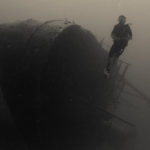
Where: Bonaire
Customs officials found nearly 12 tons of marijuana hidden on the Hilma Hooker in 1984. The vessel had lost power and was towed to shore where the inspection revealed the illegal cargo. Officials arrested the captain and crew members and the vessel remained moored at the pier. The ship was in poor condition and began to take on water. Officials decided to move it to a permanent anchor point between two reefs where it subsequently sank.
The vessel lays on its starboard side. At the stern you can see the rudder and propeller. There’s also a large deck, two deck houses, a galley, crew quarters, wheelhouse, chart room and an empty cargo hold. The ship was evidence in a criminal case, which means that nothing was removed from the vessel prior to sinking. Some objects like furniture, debris and heavy steel doors make penetration hazardous. Wreck-certified divers should take particular care due to number of entanglement hazards, low visibility and a lack of natural light.
The wreck lies between 49 and 100 feet (15 to 30 m) and visibility is often more than 100 feet. Water temperatures vary from 79 to 89 F (26 to 32 C). Open-water divers can dive the Hilma Hooker but you’ll need wreck certification to penetrate the wreck. The best way to visit the wreck is via boat charter from one of the island’s dive resorts. Bonaire has good diving all year round.
The Odyssey
Where: Roatan, Honduras
The Odyssey is a 295-foot-long (90 m) freighter, sunk in 2002. It is the largest wreck in the Caribbean. Divers can see a huge wheelhouse, many stairs and ladders, and the captains’ head with original tiling still intact. The wreck lies between two reefs, home to many tropical fish. You can see some barracuda, groupers and tuna above the wreck. Although the wreck is still fairly new there is some coral growth visible.
The Odyssey lies between 40 and 112 feet (12 to 34 m) and visibility ranges from 82 to 88 feet (25 to 27 m). Water temperatures vary from 75 to 84 F (24 to 29 C). The wreck is best for advanced divers and the best way to reach it is via a short boat ride from shore.
The best months to visit are April and May when the weather is warm and dry. The rainy season is between July and January with the peak rainy season being between October and January.
Kittiwake
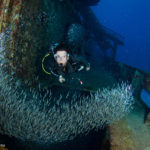
Where: Grand Cayman, Cayman Islands
The Kittiwake was a submarine-rescue vessel, launched in 1945 and decommissioned in 1994. and many of its exploits are still classified. It played a part in a number of record-breaking achievements, including conducting the deepest submarine rescue exercise in 1959. The Kittiwake crew recovered the Challenger’s black box from the Atlantic Ocean in 1986 after it exploded.
The vessel was donated to the Cayman Islands Tourism and it was scuttled in Grand Cayman in 2011.
The Kittiwake has an abundance of marine life, including a huge resident grouper that hangs around the propeller. Divers can explore the mess-hall and the large propeller shafts, with lots of natural light for easy penetration. Don’t miss the smoke stack, two recompression chambers and a head with the mirror still intact.
The Kittiwake lies between 16 and 60 feet (5 to 18 m) and visibility is usually over 100 feet (30 m). Water temperatures range from 77 to 84 F (25 to 29 C).
Open water divers can dive the Kittiwake but advanced certification with wreck qualifications are required for penetration. There is good diving year-round but note that hurricane season falls from June and November. The Kittiwake is a private park so you must pay an admission fee and visit the site with a licensed operator.
Felipe Xicotencatl C-53
Where: Cozumel, Mexico
Also called “the Cozumel wreck,” the Felipe Xicotencatl served in the U.S. Navy in WWII as the USS Scuffle. Mexico bought the vessel in 1962 and used it to patrol the Caribbean for 55 years. The government purpose-sank the Felipe Xicotencatl in 1999 as part of the Cozumel underwater park. There’s a large diversity of marine life and divers can explore the engine rooms, galley, officers’ quarters and radio room, all of which are still intact.
The wreck lies between 20 to 82 feet (6 to 25 m) and there can be strong currents at times. Visibility is usually over 100 feet (30 m) and water temperatures range from 77 to 84 F (25 to 29 C).
Open-water divers can dive the wreck though you need advanced and wreck qualifications for penetration. There is good diving year-round in Cozumel with May to October being the rainy season. The wreck is accessible via boat.
RMS Rhone
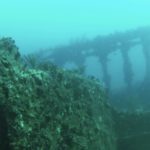
Where: British Virgin Islands
The RMS Rhone was a British mail ship. It sank during the San Narciso hurricane of 1897 when winds pushed into Black Rock Point on Salt Island. The wreck cost 123 passengers and crew their lives.
Today, the Rhone is one of the BVI’s most well-known dive sites. The bow is mostly intact and in the stern you can see the propeller, drive shaft and engine box. Most of the wreck is exposed, which means it is fairly easily penetrable.
The stern lies between 39 and 60 feet (12 to 18 m) while the bow sits between 72 and 85 feet (22 to 26 m). Visibility is usually over 100 feet (30 m) and water temperatures range from 79 to 84 F (26 to 29 C).
Divers can visit with only an open water certification but must be wreck certified to penetrate the wreck. Because part of the Rhone is so shallow, it is a perfect spot for snorkelers.
Diving is good year-round but note that hurricane season falls from June 1 to November 30. Both liveaboard and day trip options are available for this wreck.
Suffolk Maid
Where: Butler Bay, St. Croix, U.S. Virgin Islands
One of the three ‘Shallow Wrecks’ in Butler Bay, the Suffolk Maid was a 144-foot-long (44 m), steel-hulled North Sea trawler. A hurricane drove the ship onto the Frederiksted Pier during a hurricane in 1984. The next year the vessel was towed and scuttled at its present location in Butler Bay. It sits upright. Divers will see the vessel’s name, clearly visible on the bow. There are many Creole wrasse, reef fish and the occasional green moray.
The ship lies at 60 feet (18 m) and visibility is usually over 100 feet (30 m). Water temperatures range from 79 to 84 F (26 to 29 C). There’s a slight current on the wreck most of the time.
Divers can visit with only an open-water certification but must be wreck certified to penetrate the wreck. Diving is good year-round but note that hurricane season falls from June 1 to November 30. It’s best to dive the site via boat.
Bianca C
Where: Grenada
The Bianca C is also called the ‘Titanic of the Caribbean’ due to its vast size. The wreck is 590 feet (180 m) long and sits upright on its keel. The former cruise liner was owned by the Italian Costa Line but an explosion in the boiler room in 1961 led to the ship’s ultimate demise and the death of one crew member, as well as injuring eight more. After the explosion, fishermen from nearby St. George’s rushed out to help the roughly 700 passengers and crew as the ship burned at anchorage. Fire quickly spread throughout the vessel, which was towed around three miles away, a mile from the popular Grand Anse beach.
Divers can see the collapsed funnel with the ‘C’ for Costa Line still visible, lifeboat davits, and the swimming pool. The bridge has collapsed but from there you can see the fore deck with broken stairs, winding winches and fallen spars all covered in soft coral. You can also see the remains of the forward mast.
A variety of tropical fish and barracuda often hang around, as well as blacktip and the occasional bull shark. You may also see eagle rays and nurse sharks.
The wreck lies in 100 to 164 feet (30 to 50 m) and the current usually runs from medium to strong across the ship.
Divers will need an advanced qualification and wreck certification for penetration. Diving is good year-round but note that hurricane season falls from June 1 to November 30. It’s best to dive the site via day boat.
Kodiak Queen
Where: Necker Island, British Virgin Islands
The Kodiak Queen is one of only five vessels that survived the Pearl Harbor attack. After WWII it went on to become a king crab fishing vessel running out of Kodiak, Alaska. In 2012, the efforts of historian Mike Cochran, photographer Owen Buggy and entrepreneur Richard Branson saved the ship from the junkyard. Today it rests just off of Richard Branson’s private Necker Island. The shipwreck has become an underwater art exhibit with the main feature being a huge Kraken sculpture wrapped around the vessel.
The ship lies in 56 feet (17 m) of water and the visibility is usually over 100 feet (30 m). Water temperatures range from 79 to 84 F (26 to 29 C).
Divers will need an advanced qualification and wreck certification for penetration. Diving is good year-round but note that hurricane season falls from June 1 to November 30. Divers can reach the wreck via shore-based excursions.
Superior Producer
Where: Curaçao
The Superior Producer was overloaded with Christmas cargo and sank soon after it left port at Willemstad on the way to Venezuela. The vessel sits upright and is covered with a variety of colorful sponges and coral. Barracuda and blackbar soldierfish are often hiding among the wreck.
The ship lies at 100 feet (30 m) and often has over 100 feet (30 m) of visibility. There are strong currents at times as well. Water temperatures range from 79 to 84 F (26 to 29 C).
The wreck is best for experienced, advanced divers with wreck certification for penetration. Diving in Curaçao is good year-round, with the rainy season falling between October and February.
Divers usually reach the shipwreck via a shore entry and a 5- to 10-minute surface swim.
SS Antilla
Where: Aruba
The SS Antilla was a 400-foot-long (122 m) German freighter. On the day that Germany invaded Poland during WWII, the ship sailed from a safe bunker in Cartagena toward neutral Curaçao but changed course for Aruba en route after learning that the harbor at Willemstad was already full of German ships. After interception by Royal Navy ships, the crew scuttled the Antilla to avoid its capture.The wreck is covered in sponges, fire coral, anemones, yellow frogfish and other tropical marine species.
The ship lies in 60 feet of water (18 m) and visibility often exceeds 100 feet (30 m) There are strong currents at times and water temperatures range from 79 to 84 F (26 to 29 C).
The wreck is best for experienced to advanced divers with wreck qualifications for penetration. Diving in Aruba is good year-round, with the rainy season falling between October and January. The best way to access the wreck is via day boat from a dive shop.
The post Best Wreck Diving in the Caribbean appeared first on Scuba Diver Life.
from Scuba Diver Life https://ift.tt/2Q5WEgR



